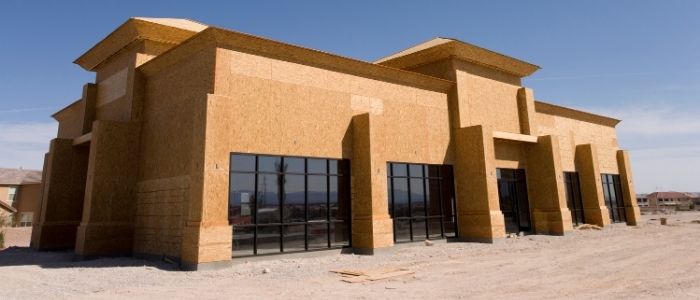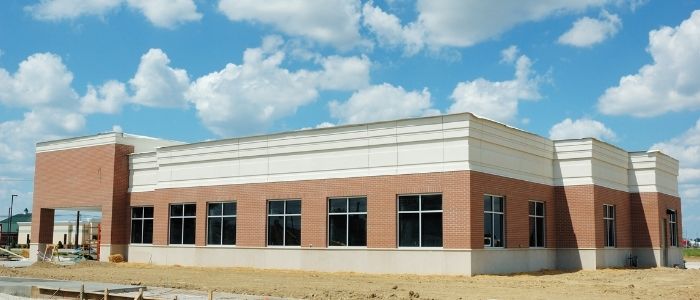You’ve laid out your vision. You want to add a new commercial building to the skyline. You have tenants lined up and ready to move in.
Constructing commercial property requires the right investments from your company. You need to devote a lot of time, money, and energy towards…
construction to ensure the building is safe and secure for the future tenants.
Luckily, we have a quick guide on how to construct a commercial building from the early planning stage right through to the final inspection and signoff.

What are the steps to construct a building?
Any good commercial developer focuses on delivering a building that is a welcome addition to cityscape and a safe office space for would-be tenants. It’s also imperative to construct the building on time and on budget. In today’s landscape, commercial developers also want to establish buildings that are as beneficial to the environment as they can be.
That’s why a tried and true roadmap for how to construct a commercial building will enable any good developer to meet expectations and deliver their goals.
Stage 1: Planning
According to an article published in ScienceDirect, the three key phases of any commercial development are:
- Design
- Construction
- Operation
In actuality, there’s the planning phase that precedes all three of those stages. The planning phase is crucial to commercial development. This is the stage when the project managers scout a location, test the quality of the landscape, and bring together the various parties that will help turn the idea into an asset that’s built onto a piece of land.
To put it bluntly, without the planning phase, the real work can’t begin. The design, construction, and operation phases can only move ahead once a real plan is in place.
Location
As the old mantra goes, “location, location, location.”
An article published on Investors Community Bank encourages commercial developers to do three things when selecting a location. The first is to build a budget and forecast how much to spend when acquiring the rights to a parcel of land. Once you know your numbers, speak to other industry professionals. These consultations can help you determine if your budget is realistic, over or under inflated.
Finally, contact a local real estate agent who has a better understanding of the area. A real estate agent can help you determine the ideal type of property for your development. Then, introduce your agent to the architect and commercial building contractor you’ve hired for the job.
Environmental assessment
Part of the process in choosing the location for a commercial building is the environmental assessment. Your architect and contractor will test the quality of the soil and verify that the grounds for the construction site are free of any contamination.
In addition to keeping the project environmentally sound, this is also part of a cost-benefit analysis for you as the developer. Should there be any issues with the land, you can cite those issues as reasons to back out of any deal before construction begins, thereby saving thousands upon thousands of dollars in unnecessary costs.
Zoning
You’ll also want to familiarize yourself with zoning bylaws of the community. Use these bylaws to verify the intended usage of the building complies with those laws.
Pre-designing
This is the final step in the planning phase. The pre-design work defines the scope, size, and economics of the building development. This work ensures that the construction work will align with the forecasted budget and establish a rough timeline of when the building will be complete.

Stage 2: Design Phase
There’s a lot that goes into the planning phase, but all of that work is for good reason. Once there’s a solid foundation – via the plan – the architect can begin work on the design phase. The goal is to design a building that can exist on top of a solid foundation on the chosen location.
During this phase of the project, the work will map out:
- The size and functions of all the rooms and common spaces that will exist in the building
- How the various utilities in the community will connect on each floor of the building
- The feasibility of the designs, and how they coalesce with the zoning bylaws
- When and how the construction of the designs can reach completion
The Carnegie Mellon University website has a great guide on the recommended responsibility for building designs that standardizes the process. In it, they outline 12 steps to produce the designs and how to delegate responsibility for approval of those tasks among the project owner, the architect, and the contractor throughout the entire process the designs and how to delegate responsibility for approval of those tasks among the project owner, the architect, and the contractor throughout the entire process.
Stage 3: Pre-Construction Phase
Now that the designs are mapped out, the pre-construction phase of the project begins. This is when the designs are finalized and approved by all the key stakeholders. Once all the sign offs are complete, the scheduling can begin.
Pre-construction project management requires teams to envision the start to end date of the entire construction process. The roadmap is documented in the form of:
- Estimations: how much material will help complete the project
- Scheduling: at what point can each phase of construction reach completion
- Tendering: which companies are considered to take on the work
- Coordination: who are all of the project managers that need to work in sync
- Documentation: where will all construction work go on record for management

Stage 4: Procurement Phase
When the schedule is mapped out, the procurement phase begins. Establish an official procurement management plan that determines how to acquire all of the necessary equipment to construct the building. You’ll need to decide what materials you already have in possession, and what else will need to be acquired through an external vendor.
Use a procurement project management program to create a procurement process that helps you construct a commercial building to your designs and specifications. This process allows you to acquire the right materials from the right partners for the best results. It also helps to select reputed vendors from companies whose missions are to help you build to higher standards, and follow appropriate guides on how to choose the right commercial partners.
Stage 5: Commercial Building Construction Phase
Now is when the real construction work begins. All of the planning, designs, scheduling, and procurement are completed to give the construction team all the necessary guidance to complete the job. The contractor and project managers will supervise the crews, and ensure the construction of the commercial building follows the criteria outlined in the four previous phases of the project. This will help ensure that deadlines are met and budgets remain on target. The supervisors will also be responsible for explaining any time or cost overruns that will extend the investment in the construction phase.

Stage 6: Post-Construction Phase
Even though the construction work will be finished in the previous phase, there’s still the post-construction phase to consider. This largely deals with maintenance and upkeep of the building so that the structural integrity remains intact.
You can hire an in-house team to handle the post-construction work. Other suggestions include partnering with a firm that provides cleaning, maintenance, and equipment repair work in an ongoing capacity to ensure the building’s assets remain in excellent shape.
Final Thoughts
As can be expected, when you think about how to construct a commercial building, there are a lot of pieces and moving parts to consider. Much of the work occurs before construction even begins, and the job isn’t finished once construction comes to an end.
Putting the right amount of work into the planning, execution, and maintenance of a commercial building development increases the likelihood of a smooth and steady project. However, you don’t necessarily need endless numbers of contracts and external vendors to complete the work. By connecting with one multi-faceted partner, you can minimize the contracts and still bring your commercial vision to life.